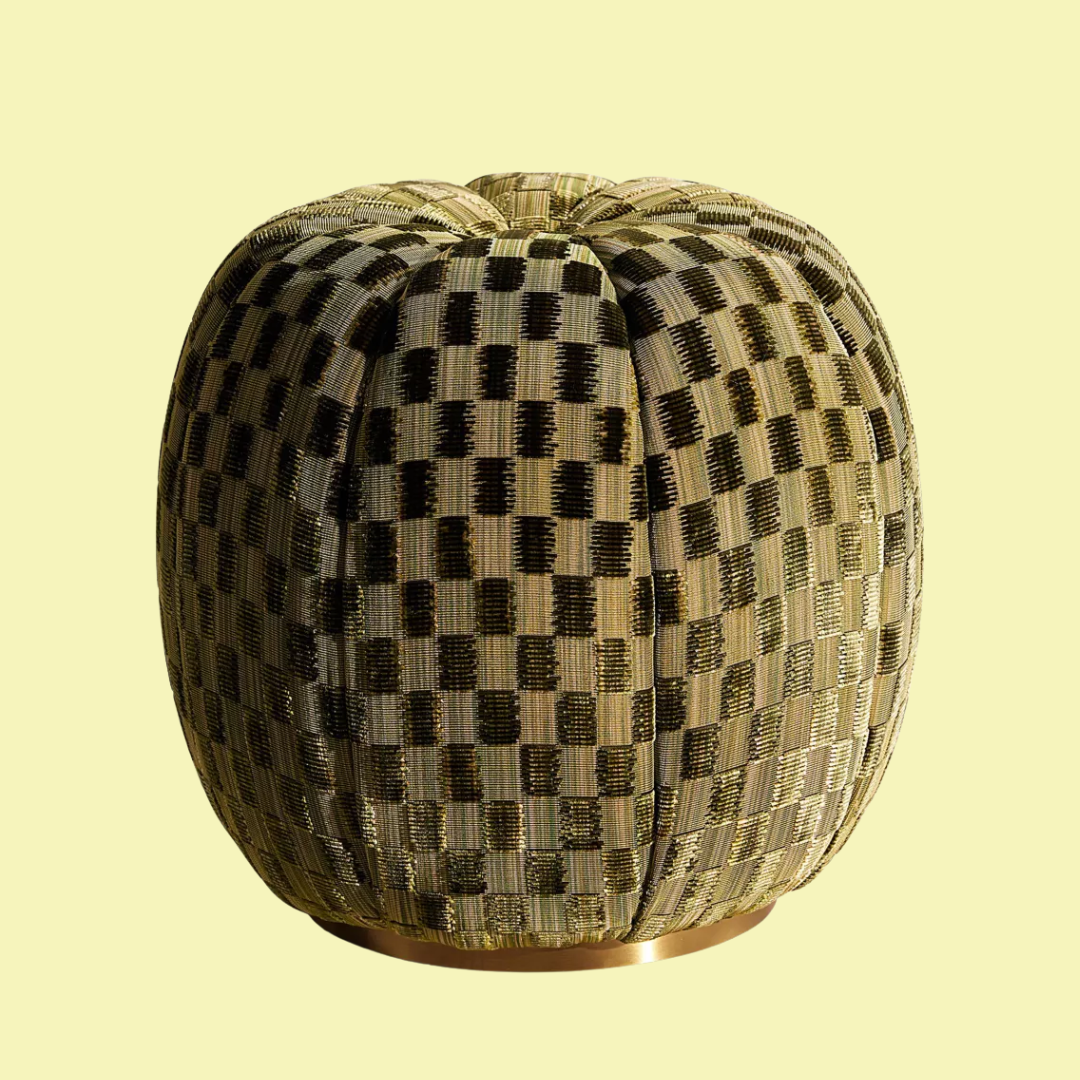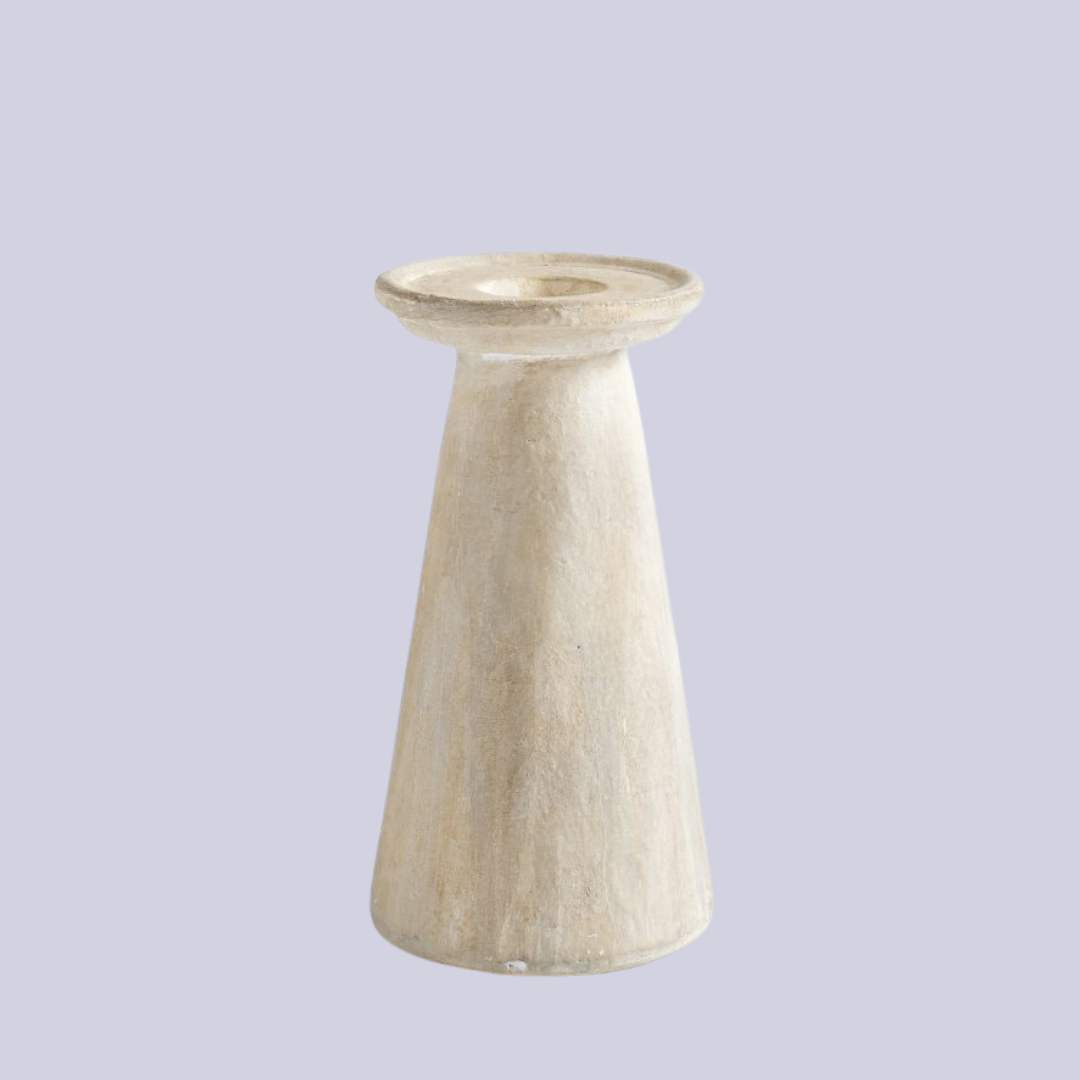6 Design Mistakes You're Making Around a Fireplace That May Be Disrupting Your Room's Flow — And What You Should Be Doing Instead
These mistakes could be the reason your entire room feels disrupted. The designers are here to tell us how to steer clear of them
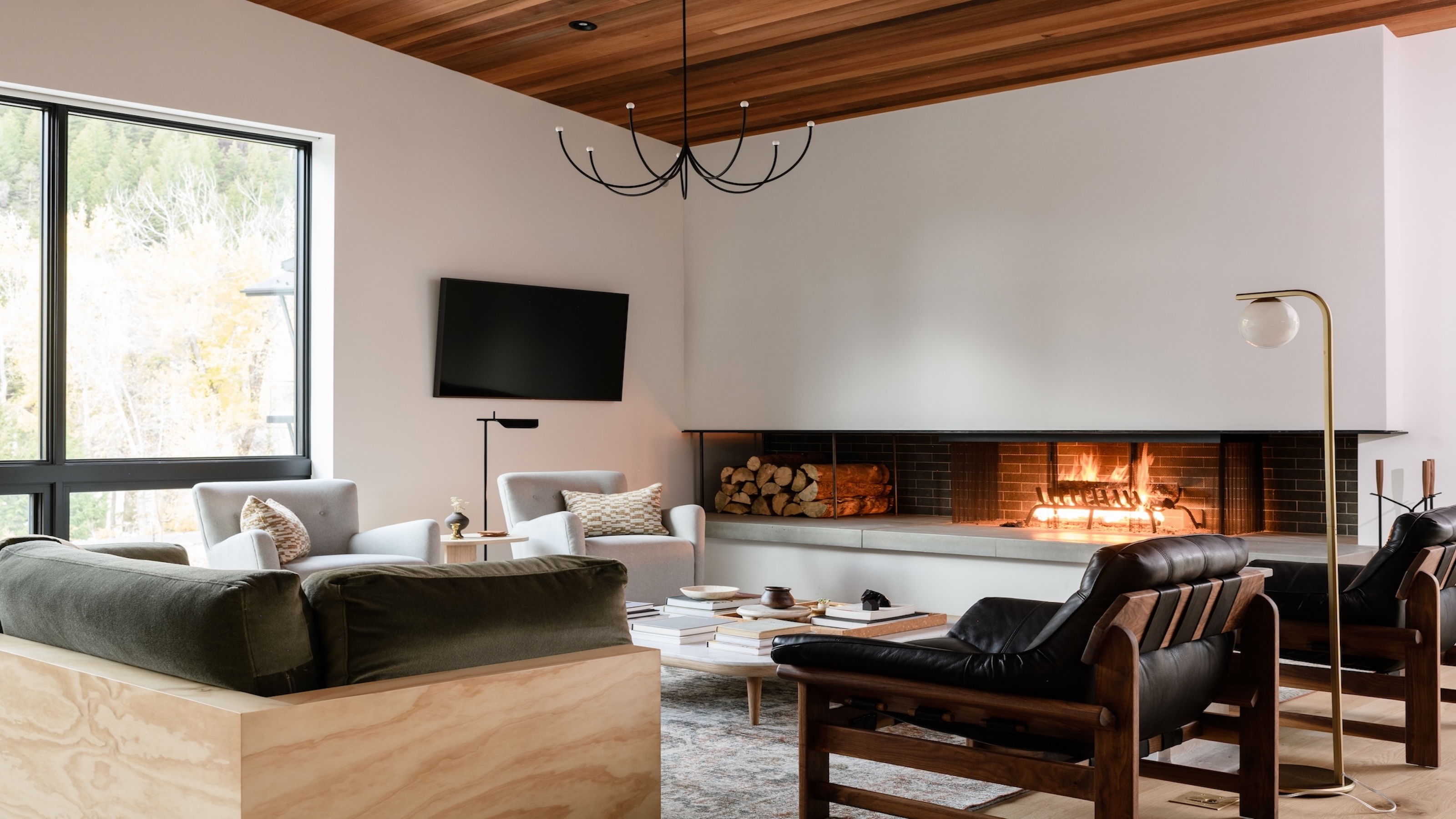

I’d be lying if I said I wasn’t constantly rearranging my living room furniture around my fireplace at home. It’s such a tricky feature to get right — especially when you're working with another focal point (commonly the TV), or when the space doubles as a walkway and needs a natural path and flow for people to move through. Every room is different, so there’s no “one rule fits all” solution. The key is understanding how the space needs to function, and making sure the placement of furniture, the TV, artwork, and everything else, for that matter, works with the fireplace and not against it.
What makes things even more challenging is that a fireplace is both functional (usually) as well as being a visual anchor, and it draws the eye instantly, even when it’s not in use. The right layout and styling can make it the ultimate core space of the home where people gather and relax; get it wrong, and it can disrupt the entire room. This is why so many people look for fireplace ideas to help them figure out how their own space could work best.
Whether your goal is traditional snug or sleek but cozy, it’s about understanding how to position furniture, lighting, and decor together to enhance your feature fireplace.
1. Treating the Fireplace as Purely Decorative
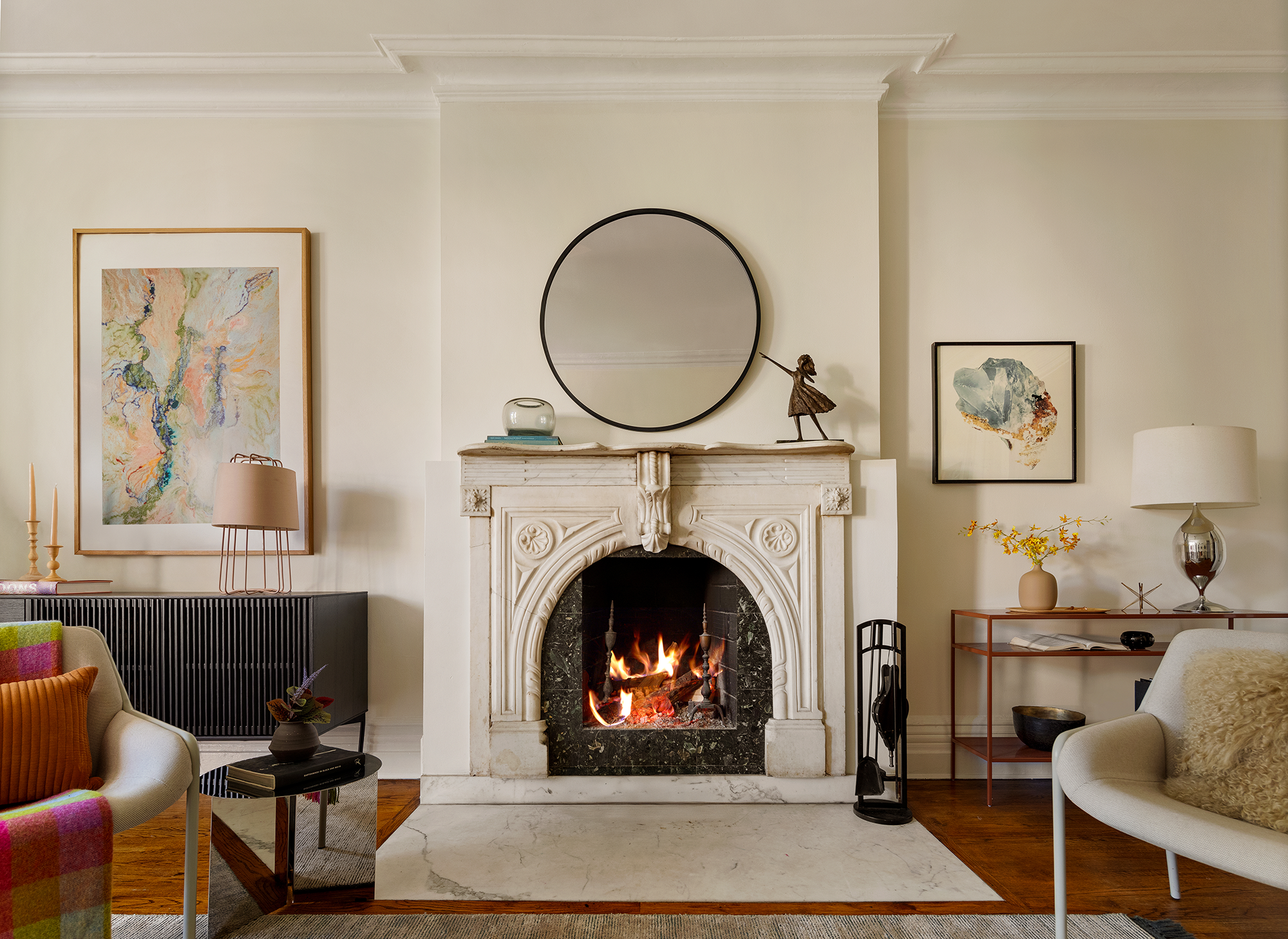
DO INSTEAD: Layer function and form; a working hearth with proper clearance and durable materials can coexist beautifully with its surroundings, whatever they may be.
“The biggest fireplace mistake I see is treating it like a prop instead of a protagonist. People either overstyle it — too many vases, candles, and objects fighting for attention — or leave it totally bare, which makes the room feel unanchored,” says Andrew Bowen, partner of Ash and co-founder of Room Service and Ash Staging.
The fireplace should set the tone for the whole space, “Think symmetry, but with tension. If your mantel is ornate, keep what’s above it minimal — one strong piece of art, not a gallery wall. If the fireplace is sleek and simple, build warmth through texture around it: a deep, low-slung sofa, soft lighting, a stack of books that actually look read.”
Even those small living room fireplace ideas should be able to breathe, think of it as giving it its own personal space, no overcrowding it. However, be sure to work with it so it feels like it belongs there and is part of the setting. “It’s not just an architectural feature — it’s the emotional center of the room,” says Andrew.

Andrew has completed over 1,500 real estate projects nationwide over the past 15 years, representing more than $50 billion in properties across key markets including New York, Los Angeles, the Hamptons, and beyond. His firm manages over 250 projects annually, with notable work at landmark developments such as One57, 432 Park Avenue, and 111 W 57th Street. Andrew is also a guest lecturer at the Yale School of Architecture. He holds an MBA and BA from New York University and divides his time between New York City, the Hamptons, and Los Angeles.
2. Ignoring Textural Balance

DO INSTEAD: Pair gloss finishes with matte surfaces and tactile natural materials to avoid visual flatness and bring depth to the overall setting.
“While a fully tiled fireplace wall often feels sleek at first, it tends to date a room quickly,” warns Interior designer Meredith Heron. Tiles work beautifully when used thoughtfully, as a surround or hearth detail, but tiled fireplace ideas, when an entire wall is wrapped in tile, can start to feel more like a bathroom than a living space. Meredith instead recommends opting for a plaster finish, stone slab, or millwork surround. “These will age far more gracefully and integrate with the architecture rather than fighting it.
The Livingetc newsletters are your inside source for what’s shaping interiors now - and what’s next. Discover trend forecasts, smart style ideas, and curated shopping inspiration that brings design to life. Subscribe today and stay ahead of the curve.
The fireplace should be an integral part of the interior architecture — not an accessory. Meredith suggests centering it on a main wall, giving it breathing space, and using materials that feel substantial. “In modern settings, it might be plaster or stone; in traditional ones, wood detailing that respects the home’s proportions." It’s good to base the fireplace’s character on the age of the house to reference its surroundings and look intentional. Meredith continues: “When the design and scale are right, the fireplace enhances everything around it instead of competing for attention."

Meredith’s work is an extensive conversation with color, form, pattern and texture. Elements of Fashion, Architecture & Interior Design blend seamlessly in Meredith’s classic reinterpreted style where she furnishes homes & businesses that look glamorous yet feel familiar.
3. Interrupting the Fireplace Focal Point With a TV

DO INSTEAD: Allow for a subtle TV to blend into the interior architecture and work WITH the strongest focal point, the fireplace.
Should you put a TV over a fireplace? The forever battle between the TV and the fireplace continues to ignite design debates and, let's face it, household disagreements. As designer Meredith Heron explains, one of the most common mistakes homeowners make is treating the fireplace as an afterthought, rather than the architectural anchor it’s meant to be, “Corner fireplaces are a classic culprit — they immediately complicate seating arrangements, especially when there’s a TV involved. Suddenly, you’re dividing attention between two focal points and compromising the comfort and balance of the entire room.”
It's often unrealistic for the TV to go anywhere else where it can be viewed easily, so if the TV must go above your fireplace, be sure to balance the TV within the space. Do not make the TV as wide as your mantle; it will feel too top-heavy. Instead, give the TV some wall space on either side, much like the example above by California Revival Studio, or simply keep the TV close by or alongside the fireplace to allow people to gather around both simultaneously.
Multi-sided fireplaces, particularly three-sided models, can also be tricky. “They tend to fragment spaces and create awkward transition zones where nothing quite lands right — a sofa feels stranded, or the flow between living and dining areas is interrupted,” she warns. Such a contemporary interior design can look jarringly out of place in traditional homes, undermining and cheapening their character.
4. Lack of Balance Overall
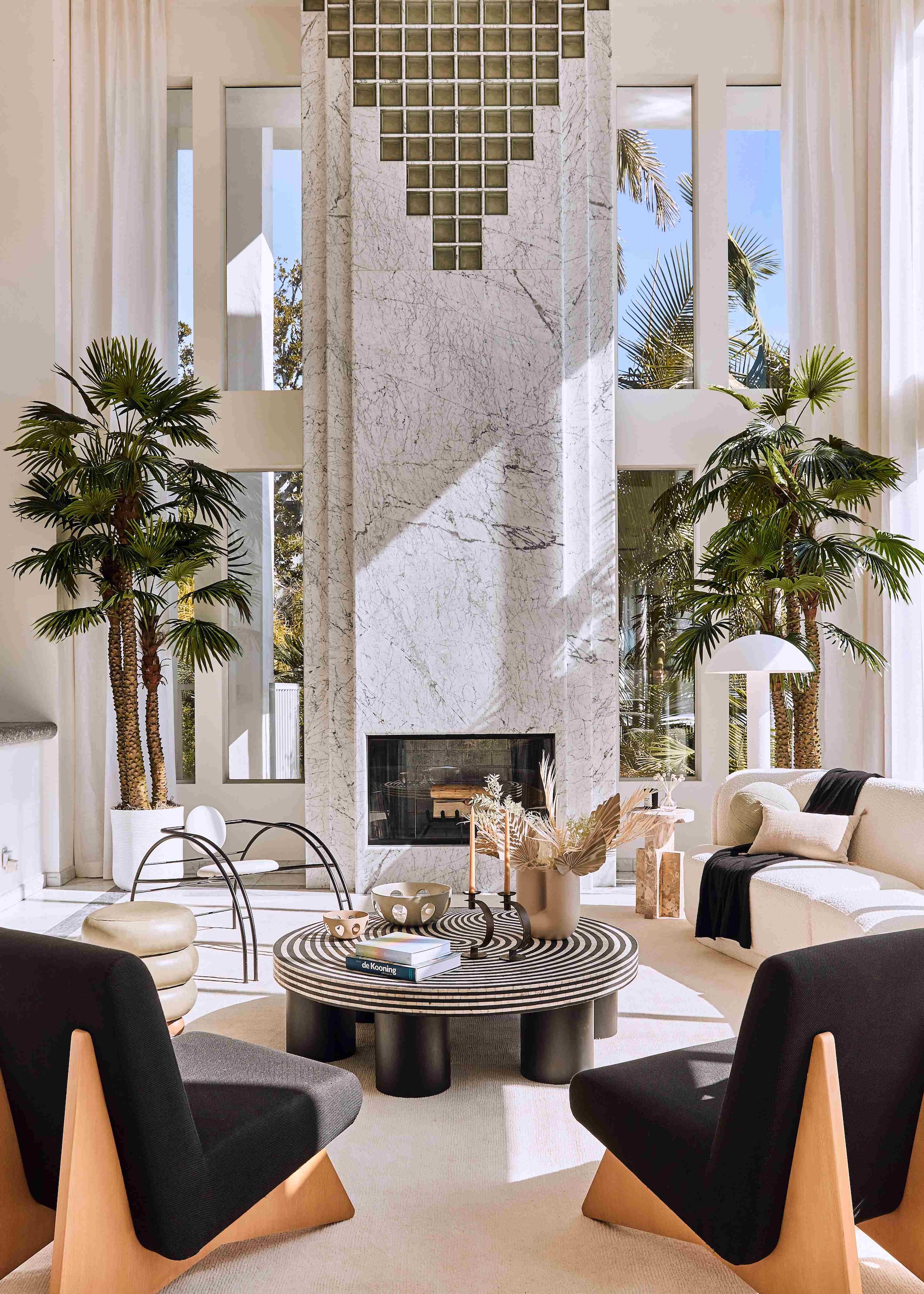
DO INSTEAD: Embrace some symmetry around the fireplace but pair different textures, and allow for natural materials to complement the scheme.
“One of the biggest fireplace mistakes I see is a lack of balance — either overemphasizing the fireplace as a focal point or not giving it enough presence,” says John K Anderson, founder of JKA Design. It’s certainly a spot in the home that people tend to struggle to get just right.
Jake Fry, founder of construction and interior design company, Smallworks, shares his thoughts, beginning by expressing that many do not realize how a room can focus mainly around the fireplace, “They crowd the room with furniture and decor that take away from the fireplace, and use furniture that does not fit in the room.
This unbalances the room and makes it feel uncomfortable. Balance in interior design is important, so remember, decor that complements, not competes, with the fireplace should be used. Furniture and decor should be the correct scale for the fireplace, and light should be used to brighten the area and allow the fireplace area to glow.” Doing these things will make the room feel like it’s sitting right, whilst creating a natural flow of movement through the room, with key pathways unobstructed.

San Francisco interior designer John K. Anderson creates classic environments as seen through a modernist’s eye. With over 20 years of experience in residential, commercial and hospitality design, he is known for his dynamic balance of contemporary, mid-century and traditional elements, developing urbane interiors that are fresh and enduring.

Jake founded Smallworks in 2005, becoming a leading advocate for laneway housing and helping shape Vancouver’s zoning by-laws through his work with city officials and hundreds of homeowners. Committed to sustainable, design-forward construction, he built Smallworks into a team known for elegant, modern homes that combine innovative building science with handcrafted finishes.
5. Blocking the Fireplace With Furniture
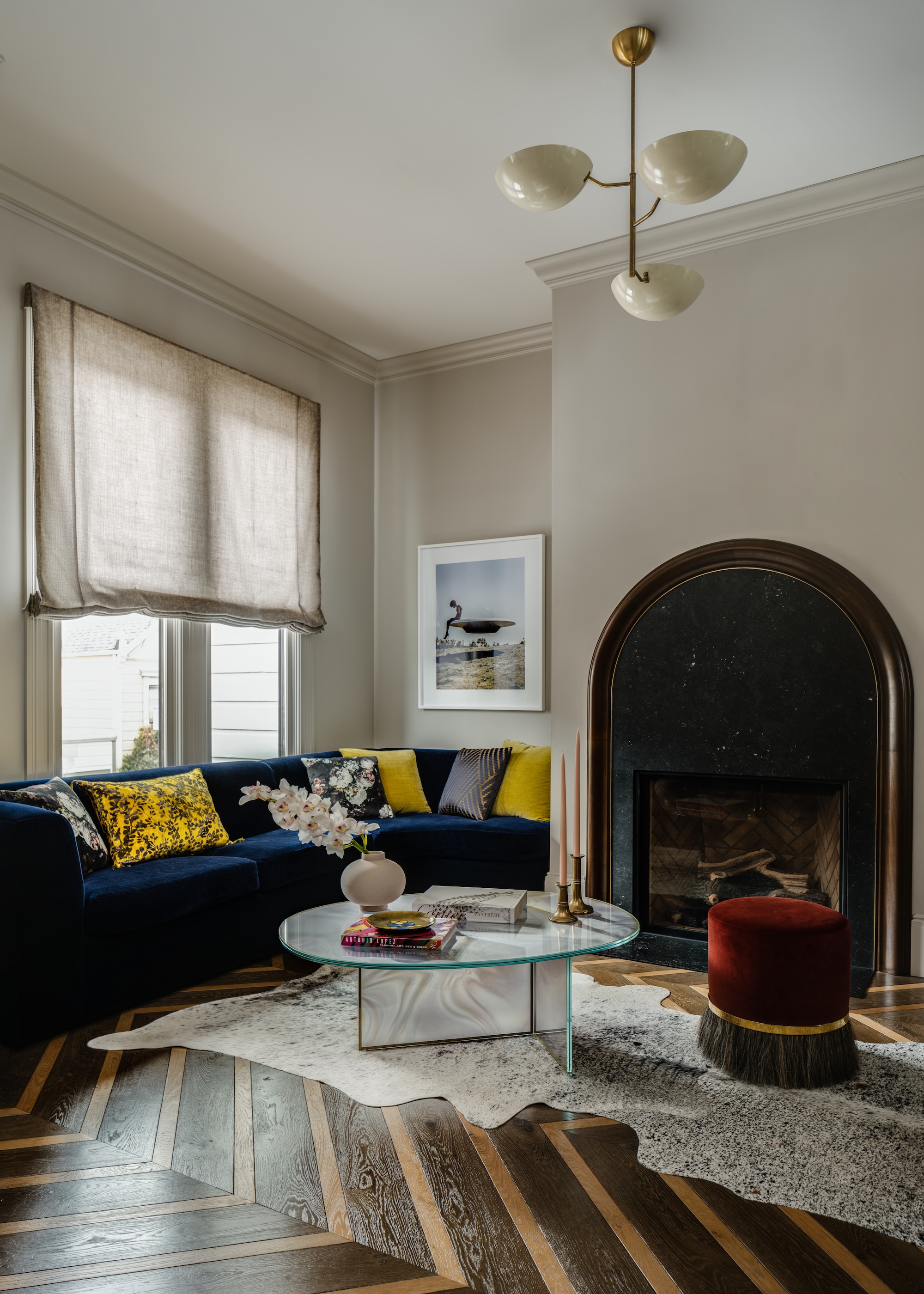
DO INSTEAD: Let the fireplace breathe – ensure there's space to gather around the feature without overcrowding it.
Even if a fireplace is non-functional, you want to avoid blocking it with furniture. The space will immediately feel cluttered, cramped, and awkward, let alone decreasing the efficiency, should yours be a fully functioning fire.
“Treat the fireplace almost like you would a sofa; it takes up room and attracts attention. Armchairs on either side of the fireplace, or a sofa across from one, can help the room feel balanced, instead of overloading one section of the room, recommends Amanda Wiss, founder of Urban Staging. Jake explains. “Often, furniture is placed too far from the fireplace, so the area feels disconnected. To fix this, people need to have furniture that faces the fireplace, making the room feel balanced."
And a ready-made heart of the home to fully embrace. Don’t overcrowd the room; let your fireplace makeover gather the attention it deserves.

Amanda is the founder of both Urban Clarity, an award-winning home organizing company, as well as home staging studio Urban Staging, whose design-savvy team gets homes market ready, to intrigue brokers and buyers alike. Urban Staging transforms spaces to get top dollar using its contemporary staging inventory. With compassion and humor, the Urban Clarity team declutters and organizes homes. The two companies work in conjunction to do full move management, getting their clients completely unpacked and beautifully settled, while minimizing stress.
6. Overloading a Mantel
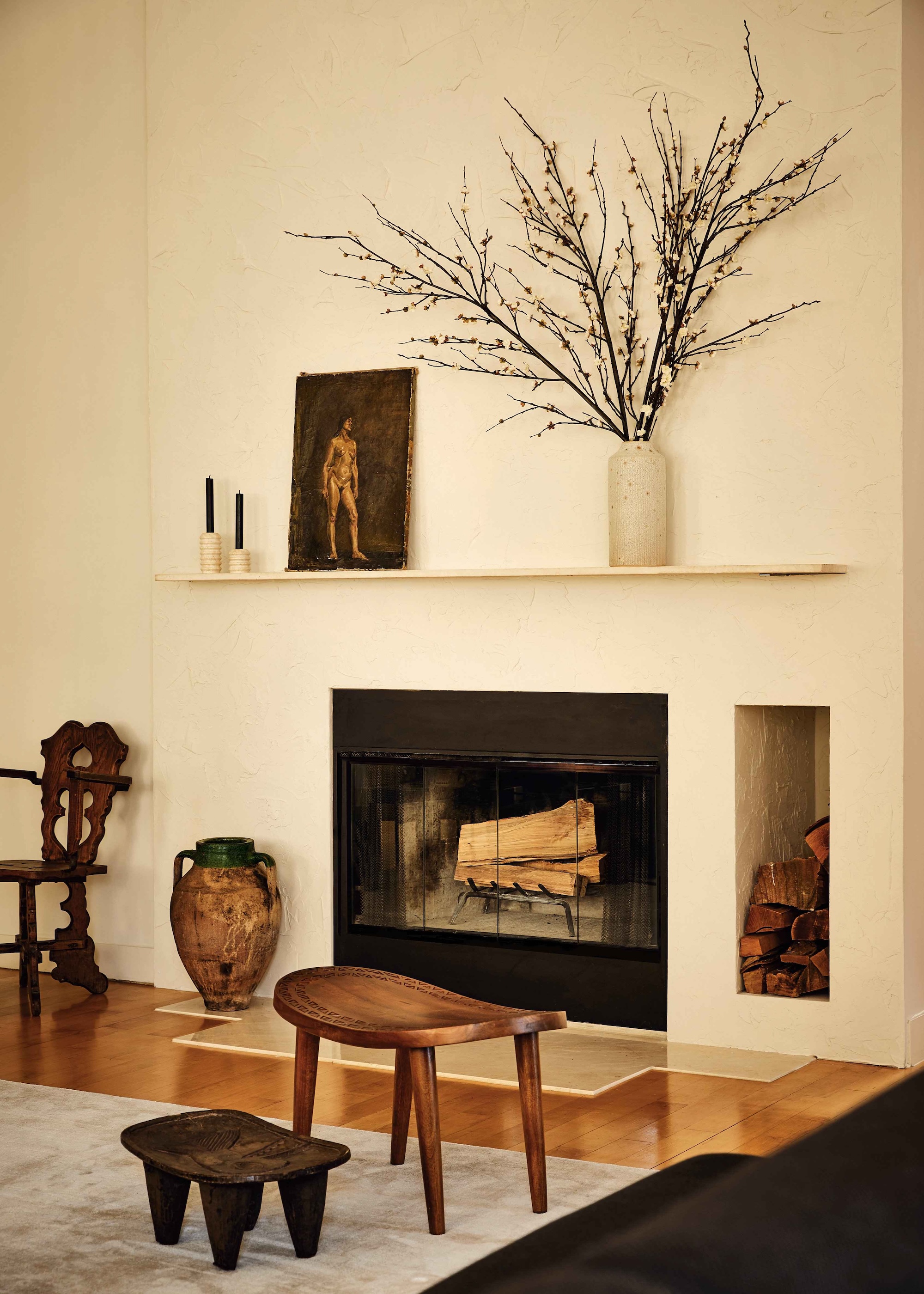
DO INSTEAD: Style the surroundings with delicate hands, keeping natural and tactile materials as a main feature.
A fireplace anchors whichever room it's in, so you need to be careful with its immediate surroundings and how you style it to provide the best ambience – this brings us to the mantelpiece. “If you use the mantel as another bookshelf, or with lots of fragile decor, it can make the fireplace feel top-heavy,” explains Amanda. “Instead, opt for a vignette on one or both sides of the mantel, a couple of books with a plant on top, or a set of candlesticks — allowing room to breathe is often more effective than putting all the decor from your travels on display.”
About the mantel decor ideas above, Amanda says she typically opts for mirrors, “Most fireplaces use darker stone and other heavy materials, so you want to use any opportunity to brighten up the overall feel of the fireplace.” Mirrors reflect light and make rooms appear larger, which keeps the fireplace from sucking the air out of the room.
Whereas Cath Beckett, co-founder of Yellow London, says, “Fireplaces can feel visually flat when the space above the mantel doesn’t connect with the rest of the room’s design." She also suggests using artwork, “We recommend using artwork above the mantel to draw the eye upward and create a natural focal point. By echoing tones from the surrounding walls or cabinetry, the fireplace instantly feels cohesive and connected to the room, tying every element together.”

Cath Beckett is the co-founder of Yellow London, a British interior design studio that creates beautiful, comfortable interiors that are full of personality. Beginning her career in Visual Merchandising at Oka before joining Joanna Wood, Cath brings a deep interest in the history of properties, a love of taking houses back to what they once were, and a talent for combining art and antiques with contemporary pieces to bring richness and character to every space.
Style Around Your Fireplace
FAQs
What Are the Rules for Fireplace Surrounds?
As long as you have the correct safe heat-resistant materials in place, “Honestly, there aren’t hard rules for fireplace surrounds,” says Andrew Bowen. “It’s more about proportion and balance. You want the surround to feel like it belongs to the room, not just the fireplace. If the surround is too thin or feels tacked on, it loses presence. Too heavy, and it overwhelms.”
He continues, “I like it when there’s a bit of contrast between the surround and the wall so that it feels intentional,” and this can be done with materials. Ensure there’s enough tactility to provoke interest and warmth, and that at a glance the fireplace area feels warm, homely, and just so. Make it yours.
Fireplaces have always held a certain special something about them — they draw people in, offering a sense of comfort like no other, but they're also a grounding feature of the home. However, we're starting to notice just how wrong you can go with it design-wise, and it takes more than just styling a few accessories to make it work. It all comes down to creating balance between beauty and function symmetry, flow, and warmth.
So whether your fireplace is an architectural statement of grandeur, or a quiet cozy corner, the key to a successful design is allowing it to lead the room, without dominating it. Connect it to your home, allowing space around it to breathe, and complement it with furniture, lighting, artwork, and other decor.

Portia Carroll is an interior stylist, writer, and design consultant. With a background in interior architecture and design, she has a plethora of creative experience in the industry working with high end interior brands to capture beautiful spaces and products and enhance their qualities.

